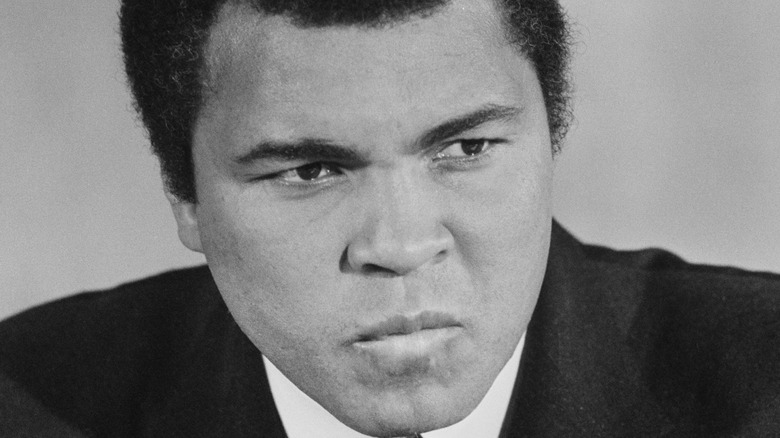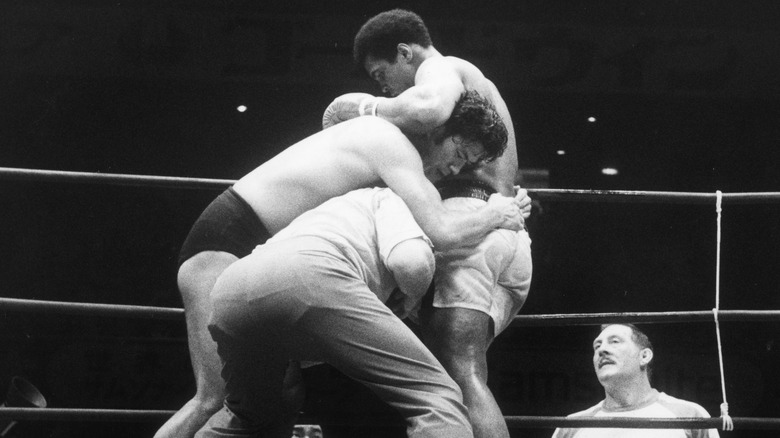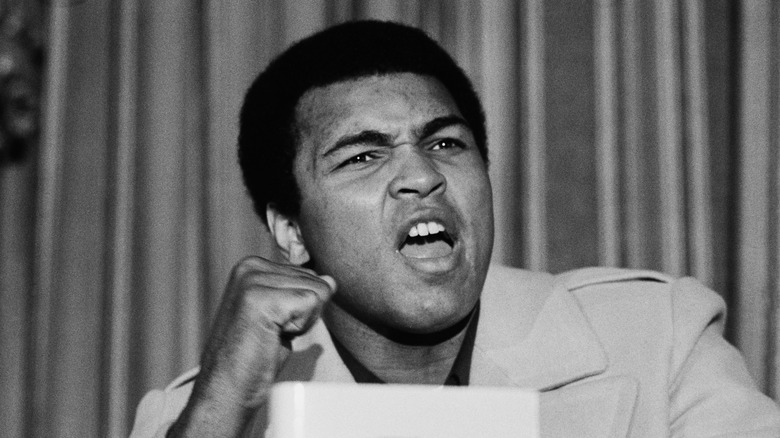Muhammad Ali's Infamous Antonio Inoki Bout Did More Damage To His Body Than You Thought
The Infamous "Boxer vs. Wrestler Match" between Antonio Inoki and Muhammad Ali was far more physically taxing than many people think. The 1976 bout was plagued with controversy, mainly stemming from the fact that Ali's camp flew into Japan believing that the match would be an exhibition that featured a rehearsal and a planned finish before the battle began. Inoki's crew was not fond of an orchestrated match, and when the issue of who was willing to take the fall presented itself, the idea of scripting the fight was no longer an option (via The Guardian).
This miscommunication led to a change in the already convoluted ruleset, barring throws, kicks from a standing position, and tackles, along with some other techniques that Inoki would likely have used against a boxer. The drastic change to the rules led to a 15-round draw that is still heavily criticized today. Throughout the fight, Inoki spent the majority of his time laying on his back, searching for elusive leg kicks to deal damage, which didn't translate into a very engaging match but did lead to a world of hurt for Ali.
Inoki's kicks nearly ended Ali's career
The fight resulted in Muhammad Ali suffering two blood clots and an infection in his leg from Antonio Inoki's vicious grounded kicks, according to The Sweet Science. Ali continued his tour of Asia despite this, competing in exhibition matches in South Korea and the Philippines before returning to the United States. When he finally did get back to the U.S., Ali needed to stay in a Los Angeles hospital for multiple weeks to recover from injuries sustained in the Inoki fight.
This extended stay in the hospital was likely the best-case scenario coming out of the fight; many were concerned Ali's injuries could even be life-threatening. Bob Arum, the boxing promoter behind the fight, recalled to The Guardian that "finally at the end of the 15th round, the referee calls it a draw. So fine, okay. It was terrible, it was embarrassing. But Ali is bleeding from the legs. He gets an infection in his legs; almost has to have an amputation."
"Not only the Norton fight would've been not happening, but Ali could've been a cripple for the rest of his life," Arum added.
The original MMA fight
Muhammad Ali would officially retire from boxing five years later in 1981. He reunited with Anotnio Inoki a few times in the years that followed at special events and promotional ventures, and eventually at Inoki's retirement in 1998. Ali was present to view Antonio Inoki's final in-ring victory and was quick to enter the ring and embrace his former rival (via The Guardian).
Ali passed away in 2016 at age 76 and is still considered by many to be the greatest boxer of all time. The event that saw a pro wrestler face-off with a boxer for the first time in recorded history is considered by many to be the first glimpse at what mixed martial arts would eventually become. Despite its infamy, the legendary fight has contributed to the legacies of both Ali and Inoki in the years since and will likely continue to do so for years to come.


